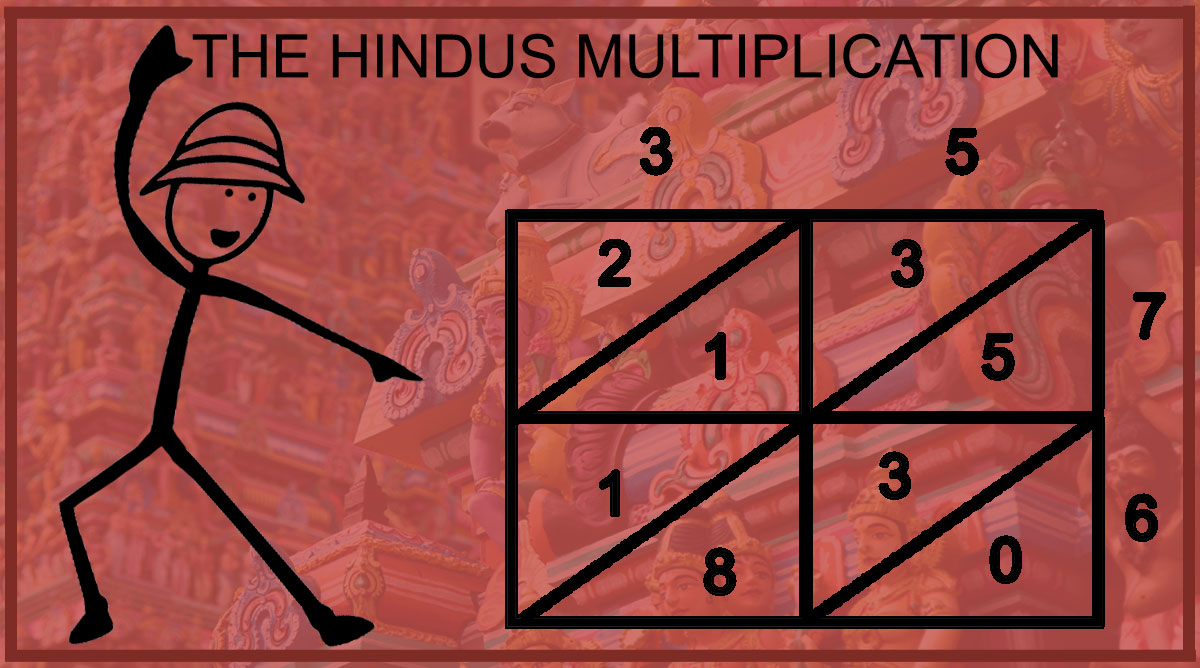The Hindu Multiplication or Lattice multiplication is an algorithm that was first founded in the 10th century in India. This method was later adopted and introduced in Europe by Leonardo Fibonacci in his Liber Abaci. The method is also called Lattice Multiplication because it requires a rectangular lattice with diagonals drawn through the cells. Each cell of the lattice is split by the diagonal into two parts used to house a 1 or 2 digit number. The algorithm of the Hindu multiplication or Lattice method of multiplication is an alternative method for carrying out multiplication computations.

Here is an example of how this method works. Let’s multiply 35X76
Since we are multiplying a 2 digit by 2 digit number we need a 2×2 lattice table with a diagonal line cutting through each cell. Write one factor (35) across the top and the other factor (76) down the right side.
35 X 76
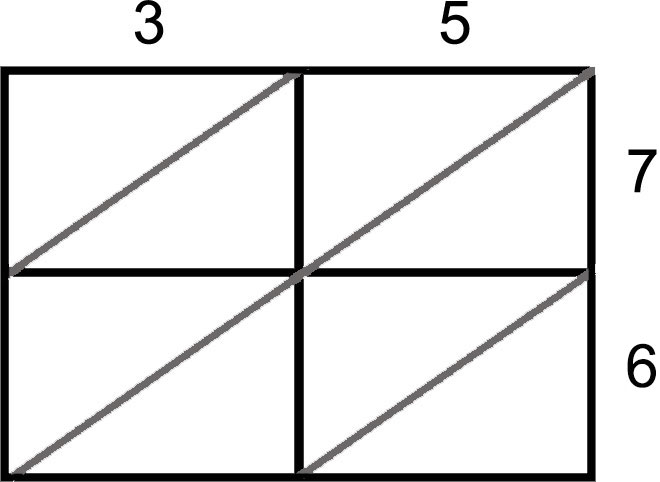
Multiply each digit across the top by each digit down the side. The order doesn’t matter. Let’s start with 5X7. Find the box where 5 and 7 intersect.
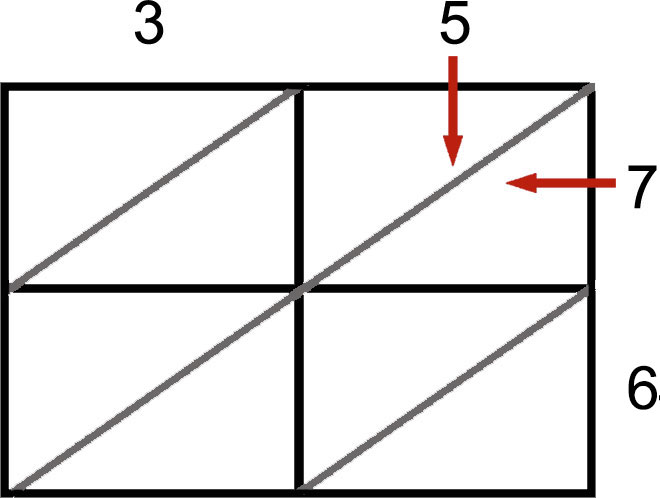
Write 35 so that the tens’ digit is above the diagonal and the ones’
digit is below the diagonal.
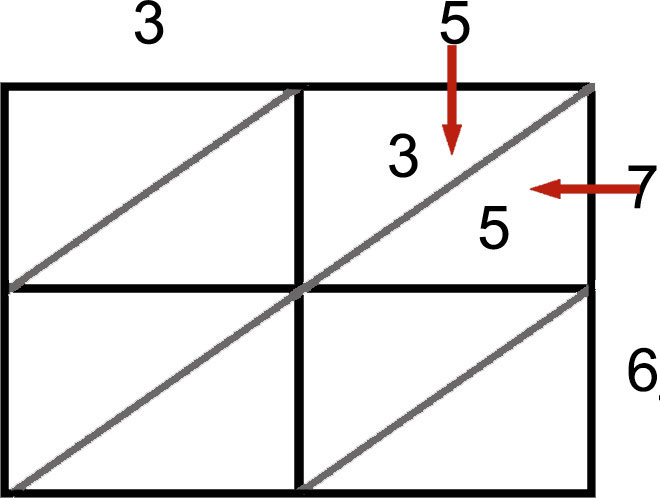
Continue the same way. Next, find the cell where 7 and 3 intersect. Multiply the numbers and write 21 with the tens’ digit above the diagonal and the one’s digit below the diagonal. If the product for a cell was just one digit then you would write 0 in the tens place.
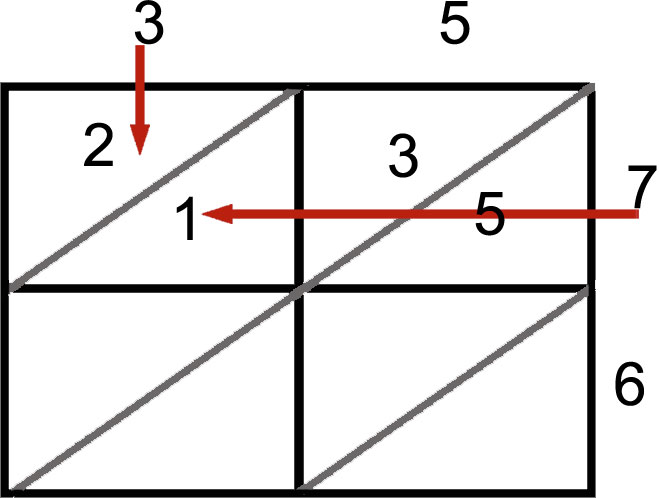
This is how the lattice will look once you are done multiplying.
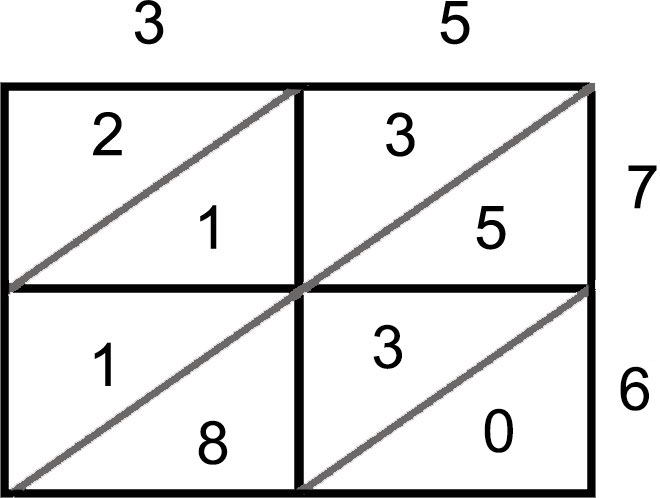
The diagonals separate the digits of the products into 4 columns. These columns are the place values. Next, add the numbers along the diagonals. The tens add up to 16 to we need to regroup. Write 6 tens and add 1 to the hundreds. The final product is 2660.
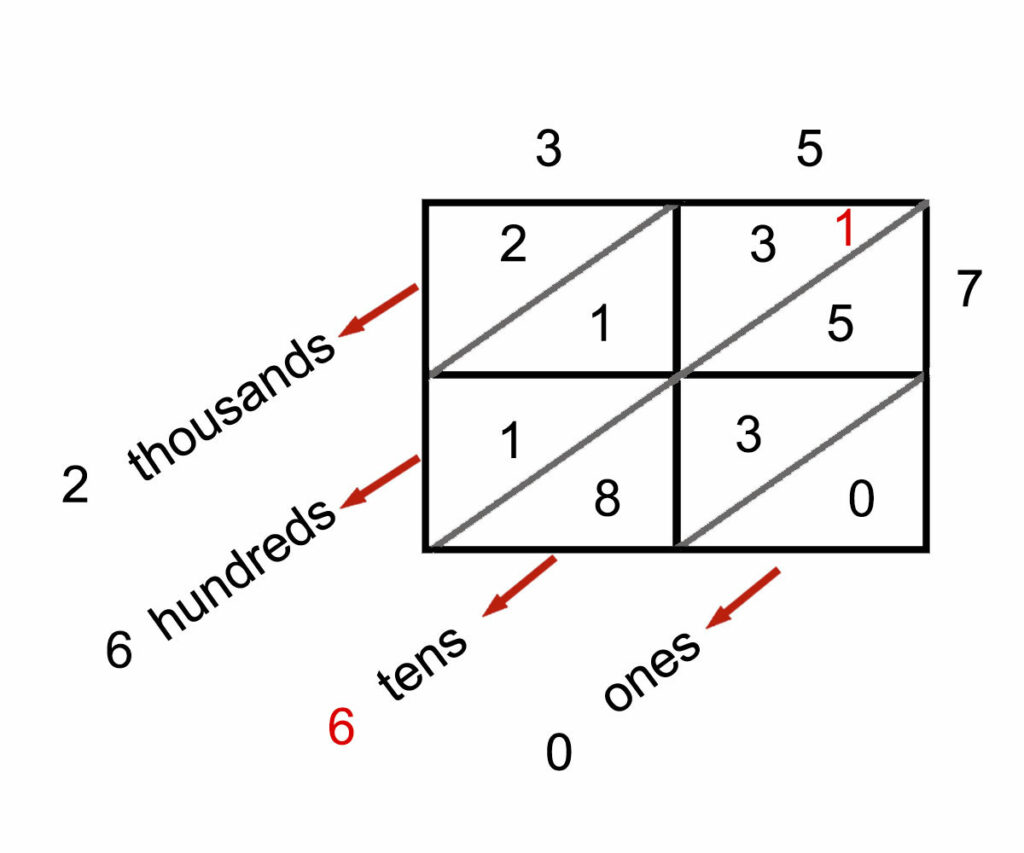
Why is this method important?
The Hindu multiplication is an ancestor of the methods we use at school today. It is a great algorithm to teach elementary students because it organizes the problem around a grid, based on place value and uses the distributive property of multiplication. These are both important skills that students need to master for solving multiplication problems. Moreover, it is important to show our students that there is more than one way to solve a problem. Teachers know well that students need to be presented with alternate ways of solving a problem so that they can adopt the one that works for them. Incorporating the history of mathematics in math lessons based on the studying concepts ignites the students’ interest in math and increases their motivation. It encourages creative and flexible thinking and allows students to discover different ways to view concepts and carry out computations.
In previous posts, we talked about The Ancient Egyptian Multiplication method and the Russian Multiplication Method which are very interesting methods to teach as well.
Practice the Hindus method of multiplication.
Thanks for visiting!

